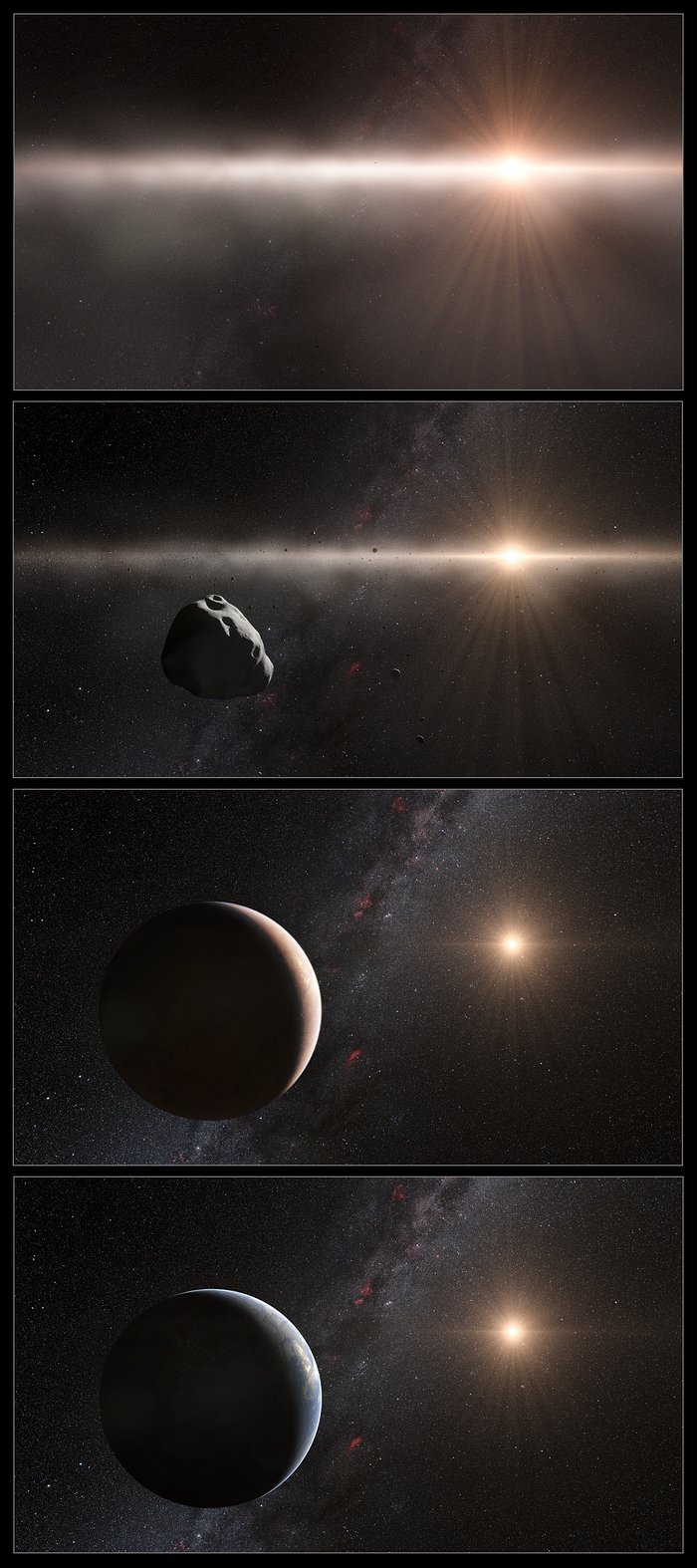Artist's impression of the development of the Solar System
This artist’s impression shows four stages of the development of the inner Solar System over a period of nearly five billion years. The top panel shows the earliest stage where the debris disc around the Sun was composed of gas and tiny particles, typically less than one millimetre across. At the second stage the particles have formed large clumps, roughly 100 kilometres across and, similar to the asteroid Lutetia. These bodies in turn formed the rocky planets including the Earth, shown in the third panel down. Over the subsequent four billion years the surface of the Earth developed to what we know now under the influence of meteor bombardment that delivered volatile materials including water, and the evolution of life on its surface.
The rare spectral properties show that Lutetia started life as a fragment of the material that was forming the inner planets but was ejected. It is now found as an unusual interloper in the main belt of asteroids, much further from the Sun.
Kilde:ESO/L. Calçada and Nick Risinger (skysurvey.org)
Om billedet
| Id: | eso1144c |
| Type: | Kunstværk |
| Udgivelsesdato: | 11. november 2011 10:00 |
| Relaterede pressemeddelelser: | eso1144 |
| Størrelse: | 4160 x 9354 px |
Om objektet
| Navn: | Asteroid (21) Lutetia |
| Type: | Solar System : Interplanetary Body : Asteroid |
| Kategori: | Illustrations Solar System |
